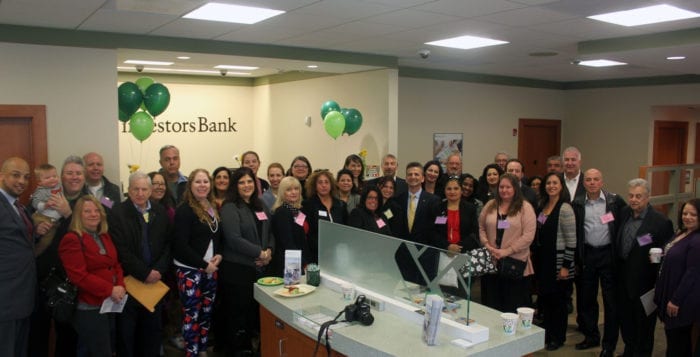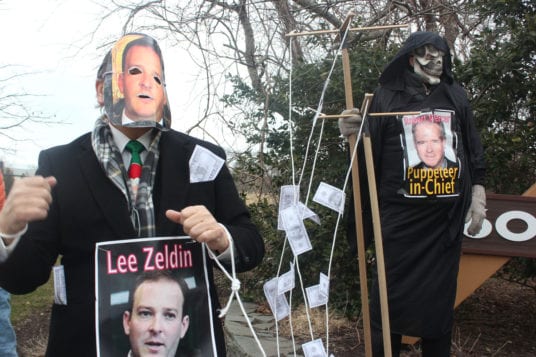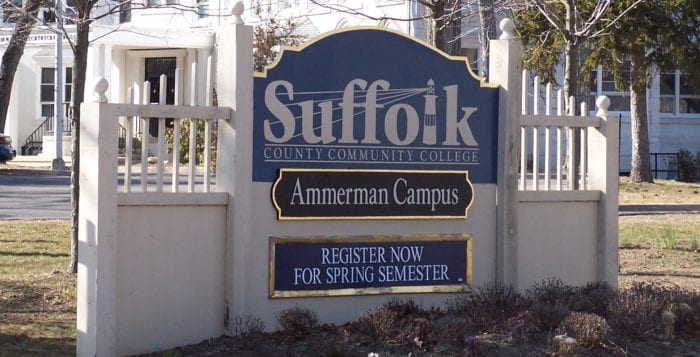 The Smithtown Animal Shelter, 410 E. Main St., Smithtown, will offer Easter photos of your pets on Sunday, April 9 from noon to 3 p.m. Come on down and have a photo taken of your pet and enjoy a family fun Easter egg hunt with lots of prizes! $10 donation requested for a framed color photo. All funds raised will go to the Star Foundation, a non-profit volunteer organization based in Middle Island that is dedicated to the welfare of domestic and wild animals. For further details, call 631-360-7575.
The Smithtown Animal Shelter, 410 E. Main St., Smithtown, will offer Easter photos of your pets on Sunday, April 9 from noon to 3 p.m. Come on down and have a photo taken of your pet and enjoy a family fun Easter egg hunt with lots of prizes! $10 donation requested for a framed color photo. All funds raised will go to the Star Foundation, a non-profit volunteer organization based in Middle Island that is dedicated to the welfare of domestic and wild animals. For further details, call 631-360-7575.
Local nonprofits gather together to grow stronger
A community bank and a financial education group recently partnered up in an effort to help local nonprofits thrive.
On March 25, the Equity First Foundation, an organization that primarily works with small businesses in financial distress, hosted a community breakfast for nonprofit organizers and supporters at Investors Bank in East Northport.
The networking event gave the crowd of good-hearted people who advocate for important causes across Suffolk County a rare opportunity to exchange business cards and ideas with one another.
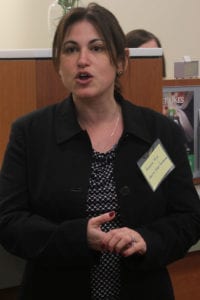
Representatives from a wide range of volunteer organizations — that help everybody from families to children to veterans — bonded over their shared interest in providing a service to those who need it most.
Priscilla Arena, executive director of Suffolk Asperger-Autism Sport and Information, a Mount Sinai nonprofit that serves the needs of the autism community throughout Long Island, said the event benefitted nonprofits far better than social media ever could.
“There’s nothing better than a face-to-face meeting with anyone, with any decision makers,” Arena said. “And here you have a room of decision makers and people that make things happen. You have the right people in the room, it’s communities helping other communities and it’s fantastic.”
Communities helping other communities is exactly what pushed Investment Bank Branch Manager and Miller Place resident Amanda Seppi to pursue the idea of the gathering with her frequent collaborator Rhonda Klch, a Mount Sinai resident and executive director of the Equity First Foundation.
Seppi, whose bank is geared toward community grassroots organizations and overall community giving, said she wanted to bring nonprofits from the local area together to network with one another and potentially help strengthen their individual causes.
“I was finding that nonprofits don’t necessarily interact with one another to develop strategies to grow, and I figured it was a win-win for everybody to be able to learn about one another,” Seppi said. “[Ultimately], I want them to be able to reach a wider audience, to be able to raise funds in order to escalate and continue to do the good they’re trying to do for the community.”
The nonprofits don’t have the exposure they deserve, she added.
“I’d like to bring as much attention to the people who are doing good for nothing, it’s important to me to have them grow and do well,” Seppi said.
Klch agreed, feeling as though the nonprofits could use all the help they could get in terms of funding, which all nonprofits rely on to survive.
Through Investors Foundation at the bank, nonprofits can receive grants and scholarships.
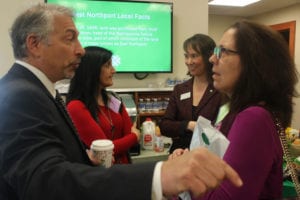
“With a lot of changes happening in the economy, a lot of grants are no longer available, qualifying for funding is much more difficult and even your local business community that would normally support different fundraising initiatives, because of their own setbacks, aren’t able to provide as much,” Klch said. “What we’re looking to do is have nonprofits partner and work uniformly. If I have money or resources coming into my organization, I can offer it to somebody else.”
Klch presented “The Haven,” a beachside retreat that nonprofits can offer to clients who may be facing economic hardships caused by illness, death and addiction. The retreat would serve as a mental reprieve for individuals and families, as well as a sponsorship opportunity.
Among some of the organizations at the gathering were Youth Directions & Alternatives, a community agency that serves youth and families in the Northport-East Northport-Elwood-Harborfields school districts; Maria’Z Hope Foundation, a group made up of women dedicated to providing support for those seeking an alternative approach to medical healing; and East Northport-based General Needs, which helps homeless Long Island veterans and their families through charitable donations and support.
Lonnie Sherman, founder of General Needs, started the group 10 years ago when he realized there were 5,000 homeless veterans on Long Island without basic necessities like socks, underwear and boots. Today, the group takes care of about 3,000 of them, cooking food, helping to treat those suffering from PTSD and delivering hundreds of pairs of boots so they can get jobs.
A recent grant from Investors Bank allowed the group to help veterans get apartments.
“When I go to an event like this, I want to walk out having had a conversation with one person that’s going to listen, so we get the word out … ultimately that’s going to make a difference,” he said. “We [nonprofits] are the ones who can make a difference.”
Local groups educate, combat climate change

Scientists and politicians are relied upon to do the bulk of the work to reduce the effects and pace of climate change, but local activist organizations on Long Island are taking on the burden as well.
“I think it’s really important for grassroots and local solutions to tackle this crisis — to be at the forefront of the solutions,” Ryan Madden, with the Long Island Progressive Coalition said. “A lot of the problems we see in this country, in New York State and on Long Island, whether it’s rampant income inequality, access to education, just issues of local pollution and ailments related to the combustion of fossil fuels, all of this connects into a larger system that informs why climate change is a problem in the first place.”
The LIPC, a community-based grassroots organization that works on a range of issues related to sustainable development as well as achieving social, racial and economic justice, has a program for improving energy efficiency. The group helps low- to moderate-income homeowners take advantage of free energy assessments and obtain financial resources to be able to go through energy-efficient retrofits and ultimately help reduce carbon footprints. The organization also recently entered the solar arena.

“It’s part of a larger push to democratize our energy system so that communities have a say in the build out of renewable energy and have ownership or control over the systems themselves,” Madden said. “We’re pushing for constructive and far-reaching changes, which is what we think is needed in this time.”
Madden added he has fears about the future because of comments President Donald Trump (R) has made in the past regarding climate change and his previously stated belief it is a hoax. Trump signed an executive order March 28 that served as a rollback of the Clean Power Plan, an initiative meant to reduce carbon pollution from power plants. The order infringes on commitments to the Paris Agreement, a universal, legally binding global climate deal.
“We’re trying to meet that with really bold, visionary climate policy that has a wide range of economic transformative impacts, while also remaining on the ground helping homeowners and institutions make that switch through energy efficiency and renewable energy,” Madden said.
Other organizations like the Sierra Club, a nonprofit, are also focused on renewable energy, but in the form of offshore wind.
“Offshore wind is the best way to meet our need for large-scale renewable energy that can help us fight climate change and provide good jobs for New Yorkers, but we aren’t used to getting our energy this way in the United States,” Sierra Club organizer Shay O’Reilly said. “Instead, we’re used to relying on dirty fossil fuels, and our energy markets and production systems are centered on these ways of producing electricity.”
Gordian Raacke, with Renewable Energy Long Island also works on this front. He and his group advocated for and eventually convinced the Long Island Power Authority to do a study on offshore wind power.
“January of this year, LIPA agreed to sign a contract for New York’s first, and the country’s largest, offshore wind project,” he said.
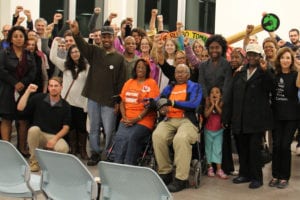
Deepwater Wind will build and operate the 90-megawatt project 30 miles east of Montauk Point in the Atlantic Ocean. The project will generate enough electricity to power 50,000 homes.
In 2012, the group also commissioned a study to evaluate whether Long Island could generate 100 percent of its annual electricity consumption from renewable energy sources. The study, The Long Island Clean Electricity Vision, showed that it would not only be possible, but also economically feasible.
Currently, the LIPC has a campaign to pass the Climate and Community Protection Act in New York State, which would decarbonize all sectors of New York’s economy by 2050, redirect 40 percent of all state funding to disadvantaged communities — which would decrease pollution over decades — and ensure a transition away from fossil fuels.
These topics and others are taught in classes at Stony Brook University under its Sustainability Studies Program. Areas of study include environmental humanities, anthropology, geology, chemistry, economy, environmental policies and planning. Students do hands-on and collaborative work and take on internships in the field. They also clear trails and develop businesses to help increase sustainability among other hands-on initiatives.
“Our mission is to develop students who become leaders in sustainability and help to protect the Earth,” Heidi Hutner, director of the program said. “Climate change and pollution is the most important issue facing us today. We have to find a way to live on this planet and not totally destroy it and all of its creatures. Our students are skilled in many different ways, going into nongovernmental or not-for-profit organizations, becoming law professors, lawyers, journalists, scientists, educators, but all focused on the environment. A former student of ours is the sustainability director at Harvard Medical School.”
Students from the program organized to march in the People’s Climate March in 2014, and will be doing so again April 29. The purpose of the march is to stand up to the Trump administration’s proposed environmental policies.
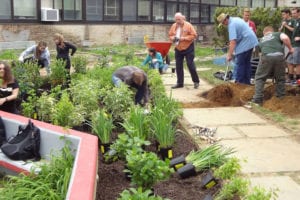
Undergraduates in the program also work closely with environmentally active local legislators like state Assemblyman Steve Englebright (D-Setauket), and county Legislators Kara Hahn (D-Setauket) and William “Doc” Spencer (D-Centerport). There is also a Sierra Club on campus.
The LIPC regularly hosts round tables to show other environmental groups what it’s up to and town halls to let community members share their stories and even visit assembly members to lobby for support. Sustainable Long Island, a nonprofit founded in 1998 that specialized in advancing economic development, environmental health and social equality for Long Island, also focuses on low-income communities through its programs.
Food equality and environmental health are the group’s biggest areas of concentration because according to Gabrielle Lindau, the group’s director of communications, the issues are tied to each other.
“There is a polarization here on Long Island,” she said. “We have extremely rich communities, and then we have extremely poor communities.”
According to Lindau, 283,700 people receive emergency food each year, so Sustainable LI builds community gardens and hosts youth-staffed farmers markets to combat the problem.
“It’s a game-changer for low income communities,” she said. “These communities gardens are great because they give people access to fresh, healthy food, and it also puts the power in their hands to find food and also, the learning skills to be able to grow that food. It’s also a paid program, so it’s giving them an opportunity to earn what they’re working toward.”
The youth-staffed farmers markets, which began in 2010, have been a real catalyst for change in communities like Farmingdale, Roosevelt, Freeport, Flanders, New Castle and Wyandanch where access to fresh food is not a given.
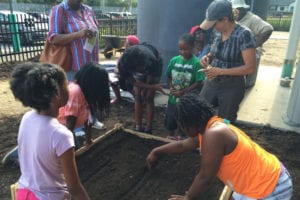
“We have so much farming going on out east here on Long Island and I don’t think people who live here ever step back to look at all the food we have here in our own backyard,” Lindau said. “These markets are an incredible program because they’re not only teaching kids in communities about agriculture where they wouldn’t have necessarily had the opportunity to do that, but they’re also teaching them financial literacy skills, and, at the same time, they’re bringing in healthy food items to their neighbors.”
Shameika Hanson a New York community organizer on Long Island for Mothers Out Front, an organization that works to give women a voice for change — empowering and providing them with skills and resources to get decision makers and elected officials to act on their behalf — does specific work with climate change, also calling for the transition from fossil fuels to renewable energy. As a national organization, the topics range depending on the needs of an area from getting methane gas leaks plugged, to stopping oil trains for moving through the area, to getting involved in carbon offsets. Specifically on Long Island, women are creating a task force to ensure the drinking water quality across the island is standardized.
“Democracy doesn’t work without civic engagement,” Hanson said. “There’s a need for a conversation to happen that is united. Even though the water authorities are separate, the water isn’t.”
Sustainable Long Island also works on building rain gardens to reduce stormwater runoff into local waters.
“We’re in a dire situation here on Long Island when it comes to our aquifers,” Lindau said. “We have an intense amount of nitrogen that’s already going into the ground.”
The nonprofit works with the Environmental Resource Management Foundation and PSEG Foundation and builds rain gardens like the one at the Cove Animal Rescue in Glen Cove and others in East Islip and Long Beach.
“It’s about educating communities on the importance of the rain garden and why green infrastructure practices are pivotal for environmental health on Long Island moving forward,” Lindau said. “If we don’t have clean drinking water, we’re going to be in trouble, if we don’t have usable soil to plant in, we’re not going to have farms growing the produce we need to survive and if we don’t have that produce, then we’re not going to be able to bring food into these low-income communities for people who can’t get it otherwise. They’re all connected in a number of different ways and a lot of them root back to health.”

Sustainable Long Island has done work with local municipalities following superstorms like Hurricane Sandy. They helped communities rebuild, hosted peer-to-peer education meetings to better prepare locals and business owners for another devastating storm and provided job training to bring businesses back.
“A big part of this is going into communities and educating them and helping to advocate in order to facilitate change,” Lindau said. “Working with other groups is extremely important as well. We’re not a lone wolf in the nonprofit world — we not only find it important to work with governments and other municipalities — but to connect with other nonprofits who have something unique to offer as well.”
Melanie Cirillo, with the Peconic Land Trust, reiterated the need for local organizations to team up. The Peconic Land Trust conserves open space like wetlands, woodlands and farmland. It keeps an eye on water quality and infrastructure like Forge River in Mastic, which is a natural sea sponge that absorbs storm surge.
“Wetlands are key in so many of our waterfront properties,” she said. “We have a finite amount of drinking water that we need to protect for our own health. The protection of land is integral to the protection of the water.”
She said although every organization may have a bit of a different focus, they’re all working under the same umbrella and premise, with the same goal in mind: maintaining the health of Long Island.
“I think it’s important for groups to have the ability to bring people together, especially because the impact of climate change affects people in a lot of different ways, whether it’s high energy costs, the impact of superstorms like Hurricane Sandy, sea level rise or coastal erosion, or ocean acidification that impacts people’s fishery and economic way of life,” Madden said. “We have to meet the immediate visceral needs of people — of communities and workers — but we also need to be thinking decades ahead on what it will take to decarbonize our entire economic system. It’s really important for groups to be oriented toward that long term focus, because this is an all hands on deck situation.”
This version corrects the spelling of Stony Brook University’s Sustainability Studies Program Director Heidi Hutner’s last name.
Science is surrounded by series of questions

Researchers often desire more data to help make the distinction between correlation — it rained the last three Tuesdays — and causation — dumping nitrogen into the lake caused the growth of algae that robbed the lake of oxygen.
Scientists don’t like to get ahead of their information, preferring to take the painstaking steps of going that extra mile to control for as many mitigating or confounding variables as they can.
Researchers are often “reluctant to say with certainty that they are correct,” Larry Swanson, the interim dean of the School of Marine and Atmospheric Sciences at Stony Brook University said.
This hesitation to indicate a certain conclusion can raise challenges for politicians, who would like to rely on scientific proof in developing plans for their constituents.
“Policy people want to create a law or regulation that is definitive and will have the desired outcome,” Swanson added.

Since he began working in and around Long Island waters in 1960, he started his work collecting data at wetlands around New Haven, and has since studied hypoxia — the process through which oxygen levels are depleted in waterways.
Swanson urges a more extensive collection of data around Long Island.
“I believe we need to monitor the physical environment for changes not just for time series data, such as temperature, but in order to understand how ecological processes are being altered as a consequence of warming,” Swanson said.
Henry Bokuniewicz, a distinguished service professor of oceanography at Stony Brook, said there was a coastline monitoring program in place in 1995 after nor’easters and hurricanes in 1992, but that the effort petered out.
“This should be re-established if [New York State is] serious about coastal impact of shoreline changes,” he said.
Bokuniewicz also suggests measuring and recording waves that are close to shore, and water levels at the ocean coast and interior bays.
Stony Brook had an initiative for additional hires in a cluster for coastal engineering and management, but never completed the hires for budgetary reasons, Bokuniewicz said. “We could do much better with a new generation of scientists dedicated to the Long Island shore,” he said.
Scientists acknowledge that the study of climate change rarely involves establishing the kind of linear connection between action and reaction that turning up the thermostat in a house would provide.
Scientists distinguish between the weather — is it raining today, tomorrow or next week — and the climate — how does March in New York compare to March in North Carolina?

The climate, generally, remains consistent with a long-term outlook, even if Long Island might experience an unseasonably hot July, an unusually cool September and a heavier-than-normal snowfall in December.
With climate change, scientists collect as much data as they can to determine how the climate is shifting. That presents significant challenges: how do researchers pick data to feed into their models and the patterns to explore?
The broader trend in March could be that spring starts earlier, extending the growing season and creating opportunities for insects, plants or animals to affect the habitat. That could be slightly different this year, amid a cold snap that lasts more than a few days, or in the wake of an unexpected blizzard days before spring.
Indeed, until, and even after there is a scientific consensus, researchers debate long into the night about their interpretations, conclusions and simulation models.
More often than not, scientists crave more information to help them interpret evolving conditions.
“While we know in general why hypoxia will be bad, we can’t really predict it,” Swanson said. “When will it start? How long will it last? This is because we do not understand all the processes — things like the role of bacteria, phytoplankton and the blooming processes and water circulation.”
Science, as it turns out, is often more about collecting more information to ask better questions and developing more precise theories.
As researchers often point out, they can be wrong for the right reasons and right for the wrong ones, all of which, they hope, helps them understand more about the inevitable next set of questions. And, as scientists have offered, it’s a never-ending discussion, as the best answers lead to more questions.
Miller Place residents rally for change at dangerous 25A intersection

In response to a 14-year-old’s death at a busy intersection, the Miller Place community says enough is enough, and their voices were heard.
Residents from across the North Shore gathered March 26 to push for drastic safety changes at a dangerous road crossing at the intersection of Miller Place Road and Route 25A, where Nico Signore was struck by an SUV while riding his bike with friends last month.
Community members, including Signore’s family and friends, said the intersection should have a red left-turn signal to stop cars from entering the crosswalk when pedestrians are given the signal that it’s safe to walk to the other side. The group also agreed every corner of the intersection should be a no turn on red.

On Feb. 23, Signore pushed the crosswalk button, waited for the go-ahead signal to bike across the intersection, and was struck because the northbound driver had a green left turn arrow.
According to Miller Place resident Tammy McGuire, rally organizer and close friend to the Signores, the disastrous layout of the intersection gave the driver an invitation to run him over.
“There’s no reason Nico should be dead,” McGuire said, holding back tears. “We want someone to do something about it before more [people] die. Any parent or community member should want this changed.”
McGuire asked for a moment of silence among the crowd in memory of the beloved Miller Place lacrosse player, and 16-year-old John Luke, who died at the same intersection in May 2015, before leading the residents in a call and response chant.
“What do we want? Change,” the group shouted. “When do we want it? Now.”
Those in the crowd held up signs that read “make Miller Place safe again” and “we demand a full red before anyone else is dead” as passing cars honked in support.
“This corner has been a disaster — this whole section needs to be revamped and they need to do it immediately,” said Angela Campo, Signore’s former religion teacher. “The more time they take for studies, the more lives are lost. The Signore family has been destroyed and this community can’t take it anymore.”

She held up a sign containing a photo of her former student, adding that he was a beautiful and vibrant boy.
“He never got to live his life and the world is a much more awful place without him,” she said. “It’s heartbreaking.”
Kevin Cantwell, of Sound Beach, said Signore’s death should be the catalyst to get something done.
“Somebody has to figure this out because it’s a safety issue and there’s been proven deaths here,” Cantwell said. “Living in the community for 15 years — seeing this happen, seeing all the accidents, talking to the Miller Place fire department — this [intersection] is a nightmare.”
Back in October, months before Signore’s death, Suffolk County Legislator Sarah Anker (D-Mount Sinai) reached out to the department based on concern from the Miller Place School District about hazardous traffic conditions at the same intersection, where a frequent number of car accidents occurred.
Signore’s death at the intersection prompted a recent request from state Sen. Kenneth LaValle (R-Port Jefferson) to the New York State Department of Transportation to conduct an immediate pedestrian-bicycle safety study along the Route 25A corridor.
LaValle received word from the DOT that it will be making changed to the Miller Place intersection. The agreement included a red turn arrow on Miller Place Road.
“This will prevent cars from turning into the intersection while pedestrians are in the crosswalk,” LaValle said. “Additionally, the DOT will be installing new signs to warn drivers about pedestrians in the crosswalk.”
The changes, according to LaValle, will be implemented in two to four weeks.
“The DOT is in the process of developing long-term recommendations as well that, when implemented, will greatly improve the safety of this intersection,” LaValle said. “It is my deepest hope that these changes will prevent any future loss of life and lower the accident rate in this area.”
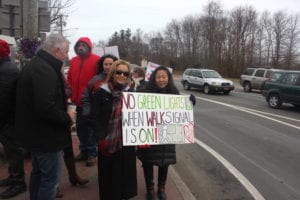
Stony Brook resident Danielle Algiere said even though she doesn’t know the Signore family, she came out for the simple fact that she’s a mother.
“It doesn’t matter that it happened in Miller Place, any local mother should be out here right now fighting for change,” she said. “He did everything he should’ve, and a flawed system is what got that child killed.”
The Signore family rejected the idea that the red light program had anything to do with Nico’s death, saying just the green arrow did.
“That’s not what this is about,” said Vincent Signore Jr., Nico’s older brother. “The intersection itself needs to be looked into and it’s nice to see a lot of people supporting this and caring about my brother. No family should ever have to go through this.”
All in attendance were encouraged to sign a petition, which help enacted the change, and another was passed around for the Rails to Trails project, to provide a safe, out-of-the-way path for residents to bike on. Also included in that petition was a request to dedicate a portion of the path running through Miller Place to Nico, an avid bicyclist.
“I met with the parents and they want to see a better situation in their community,” Anker said. “I hope if we move forward with Rails to Trails we’ll provide that safe place for our children to enjoy riding their bikes. The Signore family is close to my heart right now.”
This version is updated to include state Sen. Ken LaValle’s response from and about changes made to the intersection by the New York State Department of Transportation.
Local residents march against Robert Mercer
Co-CEO of East Setauket-based investment firm connected to major money behind Trump administration







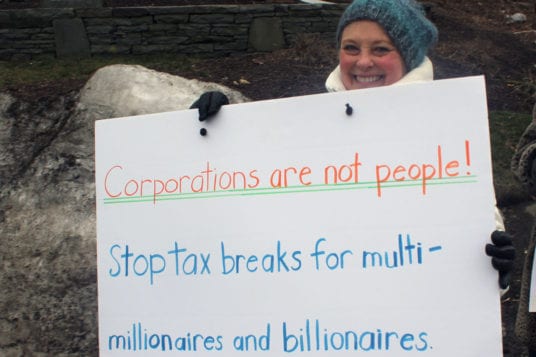


A large group of political protesters paraded along busy Route 25A in East Setauket March 24, aiming their outcry not just at the administration in Washington, D.C., but a reclusive hedge fund billionaire by the name of Robert Mercer residing in their own backyard.
Mercer, the co-CEO of an East Setauket-based investment firm and resident of Head of the Harbor, has been under the spotlight for being the money behind President Donald Trump’s (R) administration, maintaining a major influence on the White House’s agenda, including its strict immigration policies.
Mercer, a major backer of the far-right Breitbart News, reportedly contributed nearly $13.5 million to the Trump campaign and, along with his daughter Rebekah, played a part in securing the leadership positions of chief strategist Steve Bannon and campaign manager Kellyanne Conway.
Regarding Mercer as the administration’s puppeteer-in-chief, protesters assembled to bring public attention to the local family’s power in the White House and the influence “dark money” has had in America.
“I think we’ve reached a worrisome point in our history that a single individual can have the kind of influence that Robert Mercer has, simply because he has a huge amount of money,” Setauket resident John Robinson said. “I think he’s an extremely dangerous individual with worrisome views. He just wants government to not be around so people like him and companies like his can plunder to their heart’s content.”
The short march, made up of several protest groups including the North Country Peace Group, began at the CVS shopping center and landed at the bottom of the hill where Mercer’s Renaissance Technologies sits. Leading the march were local residents wearing paper cutout masks of Trump, Bannon and U.S. Rep. Lee Zeldin (R-Shirley), each strung up like puppets and controlled by a resident in a grim reaper outfit, representing Mercer.
Equipped with signs reading “Mercer $ Bought Trump We Pay the Price” and “Resist Mercer,” Long Island residents stood in front of the investment firm’s office and participated in a mock debate with the faux-political figures. The topics ranged from Mercer’s denial of climate change to Zeldin’s stance on the now-pulled American Health Care Act.
Sue McMahon, a member of the grassroots coalition Building Bridges in Brookhaven, had only recently learned about Mercer’s heavy involvement in Trump’s presidency and his close proximity and participated in the march to expose him.
“I’m very concerned we have a person like this among us who holds the power of the Republican Party,” McMahon said.
She said she’s particularly troubled by the administration’s overwhelming ignorance of environmental issues, its emphasis on money and the extreme views of Breitbart News.
“This is not the America I grew up with, this is not what I want,”she said. “I’m not normally a protester, but I believe we all have to stand up now.”
Paul Hart, a Stony Brook resident, said he was there to support democracy.
The American people have lost representative government because campaign contributions are now controlled by the rich, he said, and it’s hard to think about the needs of constituents when they don’t contribute in a way that’s beneficial to a politician’s re-election.
“The average person has absolutely no voice in politics anymore,” Hart said. “Bbefore, we had a little bit, but now, we’re being swept aside.
One protester referred to Mercer as one small part of a larger picture, and expressed concern over a growing alt-right movement throughout the country that prefers an authoritarian government that runs like a business.
“I guess that’s what Trump is all about,” said Port Jefferson resident Jordan Helin. “But we’re seeing what the country looks like when it’s being run like a business, [and it’s scary].”
Myrna Gordon, a Port Jefferson resident and member, said her organization has held previous actions against Renaissance Technologies, and was among the first grassroots groups on Long island to take notice of how entrenched in the White House Mercer and his family are. According to her, Rebekah Mercer is in many ways more powerful than her father.
“We cannot take the focus off [Rebekah Mercer] right now, because she’s become a powerful force in this whole issue of money in politics, buying candidates, everything we see in our government,” she said.
Since Robert Mercer is local and lives in our community, she added, it’s time that we showed our strength and our voice regarding what this money is doing to our country.
Picture book award winners revealed at Emma Clark library
Contest, in its third year, part of endowment by children in memory of their mother
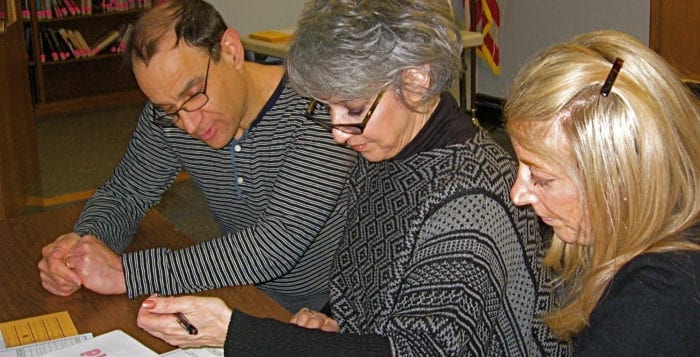
By Donna Newman
When Helen Stein Shack passed away three years ago, her children wanted to celebrate their mother’s life with a legacy she’d have loved. Where to do it was an easy decision because Shack was both a bibliophile and a big fan of the Emma S. Clark Memorial Library in Setauket.
Library Director Ted Gutmann recalled how Shack’s children approached him to establish an endowment that would support an annual event in her memory each April. They only needed to decide what the event would be.
“They wanted to do something at the library specifically dealing with children and literature created expressly for young readers,” Gutmann said. “Librarian Nanette Feder had a group of teenagers working with younger children. We asked the teens if they’d like to try writing picture books. We created a contest, established rules, and offered a cash prize. The first year we promoted the contest through social media, the library website, department chairs and school librarians. Now it’s taken on a life of its own.”

In an interview with three of Shack’s four children, as they gathered at the library Feb. 4 to review the entries, daughter Sherry Cleary explained their thinking.
“The inspiration for this library thing was that she really loved the process of children learning to read — and she loved this library,” she said. “It was our first choice to memorialize and honor her because when people would visit her, she would say, ‘Want to see my library? Let’s go see my library.’ She would bring people here, which is a little weird. It would make me laugh.”
All four children agreed that the library was the appropriate spot for Shack’s lasting legacy.
And now, the library is pleased to announce this year’s prize winners in the 3rd Annual Helen Stein Shack Picture Book Awards — a contest showcasing writing and illustration talent in Three Village secondary schools.
Each year students in grades 7 through 12 are invited to submit an original children’s picture book created by a single person or an author/illustrator team. There are two judging categories: Grades 7 to 9 and Grades 10 to 12. There is a first and second place winner in each category.
First Prize (Grades 7 to 9) goes to Eliana Sasson, an eighth-grader, for “We Can Still Be Friends,” which teaches children to embrace and celebrate differences. Second Prize is awarded to Nicole Freeley, a ninth-grader for “Sammy the Sock Monkey.” They are both students at P. J. Gelinas junior high.
First Prize (Grades 10 to 12) goes to Ward Melville high school sophomore Katie Zhao for “Claire and Her Bear,” about a young girl whose beloved teddy bear goes missing and the emotions she experiences when this happens. Second Prize is awarded to Cassidy Oliver, also a Ward Melville sophomore, for “Color Your World.”
“I think she had this drive to do things differently. The way she grandparented — and her roots in education — inspired us to [create] these awards.”
—Sherry Cleary
Shack was an intelligent and courageous woman. After graduating from Brooklyn College in the early 1950s, she obtained an elementary school teaching job in California, and boarded a train heading west, alone.
“At that time, it was an extraordinarily brave thing to do,” said Cleary. “People got married and stayed in Brooklyn. I think she had this drive to do things differently. The way she grandparented — and her roots in education — inspired us to [create] these awards.”
Cleary went on to describe the connection Shack made with her son, the first grandchild.
“I had the first grandchild,” she said, “but we were very far away. She didn’t see him often. She would tape her voice reading a children’s book and then send the tape and the book to him. So, he would sit in a big blue chair in our living room and listen intently to the tape and turn the pages when she made the noise [that signaled to do that]. He had connection to her in that way — and later, he became a librarian.”
Eventually, Shack had seven grandchildren.
Knowing how important children’s literature was to their mother, the family wanted their event to incorporate it in some way. Although Shack did not return to classroom teaching after remarrying and having two more daughters, when the girls were grown Shack tutored kids in the public schools. Her focus was on giving them access to literature. More than just teaching reading, she gave them access to books.
“And what you can get from books,” added daughter Karen Reid, “all the information. All questions get answered in books. And if you don’t have questions — read a book — because then you’ll have questions. [Our mother] was a big questioner and always wanted us to seek information in books. She thought it was wonderful that authors could write information in a way that kids would want to read it.” That impressed her.
Shack’s only son, Ed Taylor, said he didn’t think there was anything spectacular about his mother.

“She was just a loving person,” he said, “loved her family, her kids and her grandchildren, nephews and nieces. She always stressed education, always stressed reading. I don’t know if she was much different from other moms, but she was ours. She was special to us; but I think everyone’s mother is special to them. The best compliment I could give her: she was a good mother.”
Cleary talked about a third daughter, Barbara Kelly, who has three children. The kids would come for two weeks in the summer to visit their ‘savta’ (Hebrew for grandmother).
“They’d come in the house and unload all their stuff and she’d say, ‘Did you bring books?’ and they’d look at her and say, ‘No, we didn’t bring books all the way from California,’” Cleary said. “And she’d say, ‘Let’s go to the library.’ She’d bring them to the library to get books. As the children got older, on their way to visit they’d ask each other, ‘How long do you think it’ll be till we go to the library?’”
Shack fostered the notion that you should never be without a book. Unsurprisingly, her progeny are all readers. “The irony is, because she was so connected to the library, she did not have a lot of books in the house,” said Cleary, “which used to drive me crazy. She’d say, ‘I don’t buy books. I go to the library.’”
Winning authors will be recognized at a private awards ceremony at the library, Thursday, April 27 at 7 p.m. Each First Prize winner receives a $400 scholarship; each Second Prize winner receives a $100 scholarship. Bound copies of all the winning entries will be presented and added to the library’s Local Focus collection. All contest entrants receive certificates of participation. Light refreshments will be served, donated by The Bite Size Bake Shop, a local Three Village business.
The Emma S. Clark Memorial Library, is located at 120 Main Street in Setauket and provides public library service to all residents of the Three Village Central School District.
Miller Place video game store a haven for kids

A local video game store sets itself apart from the rest by giving those with special needs, and their families, a night to call their own.
When Shoreham resident Tristan Whitworth opened Game On, a retro video game and toy store in Miller Place, in 2015, he did so with a few personal missions in mind. Not only did he want to send his adult customers back to their childhood when they entered the door, he also wanted to provide a community-oriented haven for kids with common interests. He envisioned a place kids could hang out, be themselves and play their favorite games together, similar to the comic book stores and arcades he and his friends would rush to after school when growing up.

So when Whitworth, 31, noticed that a majority of his loyal customers were kids, teens and young adults on the autism spectrum — all separately coming into the store with their families — he jumped at the opportunity to set up an event where they could all meet one another, make new friends and form a bond.
“At first, I started a little trial thing here at the store on Fridays where we had pizza and I told certain families to just come in, play games and hang out with us [the staff],” he said. “The kids just started communicating with each other, and the parents started to communicate with each other. The kids exchanged phone numbers and even started having appointments to hang out. It blew my mind.”
In October 2016, the trial gatherings officially became “The Autism Social Club & Game Night,” a once-a-month and completely free Game On event held at North Shore United Methodist Church in Wading River, where young people on the autism spectrum, as well as those with Down syndrome and other disabilities, can enjoy some independence and play a variety of games with their siblings, parents and friends old and new.
On the last Friday of every month, Whitworth and members of the store’s staff venture to the church and set up tables, TV’s, and a wide range of game consoles from Super Nintendo to Sega Genesis to Playstation and Atari in a giant room for the game night, hosted between 7 and 9 p.m.
Those who are sound-sensitive, or don’t like video games, can pick from a large selection of board games like Trouble and Chutes and Ladders, and healthy foods, like fruit and hummus, are served to help boost better dietary habits. While about 10 kids showed up on the first night, Whitworth said there are up to 25 kids and parents that now attend and the event is only growing.

“I love it, I’m obsessed,” Whitworth said of the event, for which he’s made T-shirts and a logo consisting of puzzle pieces inside a brain. “The biggest thing for me is to make sure [the kids] know they’re not alone. Some don’t have others they can relate to or have friends with common interests. At the last game night, four kids who had only met through this event organized their own little thing where they each brought in one video game and they sat in a circle and played with each other. The parents didn’t organize it, I had nothing to do with it, they just communicated with each other and that was awesome.”
Dani Sanford, a Game On employee and game night volunteer, said the event has been great for her younger sister, who has Down syndrome.
“She socializes more, everyone there is so sweet to her, so welcoming and [friendly] and so my mom loves bringing her there,” Sanford said. “She usually just plays solitaire and games she can play by herself, but now, she’s actually looking forward to playing with other people.”
Sound Beach resident Samantha Netburn and her four children have been going to Game On ever since it opened, developing a close friendship with Whitworth and being a huge reason the event was thought up in the first place.
With two of her children — Jeremy, 15, and Summer, 14 — on the spectrum, Netburn said the family looks forward to the game night every month.

“It’s really amazing, Tristan’s such a good guy and he’s so good to the kids…it’s nice to get together and sit down with other kids and just have a good night for a few hours,” Netburn said. “It’s cute how the kids all have these friendships now and look forward to seeing each other. There are kids out there that don’t play with a lot of kids and don’t know how to…so they have this.”
Summer, who spends most of her time at the game night socializing and getting to know everyone, has broken out of her shy shell since attending the event.
“At Game On, I like to talk to new people and ask them questions like, ‘what school are you in?’ or ‘what kinds of stuff do you like to do?’ and it’s nice to talk to them about themselves,” Summer said.
Jeremy said he’s always gravitated towards the older games because they “have a lot more character” and rely heavily on “strategy and thinking,” and thinks playing video games with others is an even more connective experience than playing sports.
Pastor Hal Low of North Shore United Methodist Church said as a father of two sons on the spectrum, he was quick to respond to Whitworth’s call asking to use the building to host the event.
“I was on board from the moment he came to me with the idea,” Low said. “I know my sons look forward to it every month and it’s an opportunity for them to socialize and have fun in an environment with their peers and other people who are understanding of autism.”
Whitworth said while he hopes to start up a second game night in the future, he’s happy to have provided kids who love to get their “game on” with a place to go.
Game On is located at 465 Route 25A. For more information about Game On or the game night, call 631-821-GAME (4263) or check them out on Facebook at www.facebook.com/gameonmpgamenight/.
Northport Library to host Job Fair
The Northport Public Library, 151 Laurel Ave., Northport will host a Job Fair by the Suffolk County One-Stop Employment Center on Wednesday, March 29 from 10 a.m. to 1 p.m. Representatives from over 25 local businesses are scheduled to attend including Attentive Care, Bright Star Care, Catholic Guardian, Certified Laboratories, Combined Insurance, Developmental Disabilities Institute, First In Service Staffing, Goodwill, Home Depot, HW Staffing Solutions, Interim Healthcare, Long Island Cares, Lloyd Staffing, Lowe’s, Maxim Healthcare, National Recruiting Group, NRL Strategies, NY Community Bank, NY Life Insurance, Pier 1 Imports, Prudential, Right At Home, SCOPE, Sears, Sysco, Teachers Federal Credit Union, UCP of Suffolk, Urban League Mature Workers Program and YAI. All are welcome and no registration is required. Bring copies of your resume and dress to impress. For further information, call 631-261-6930.
Suffolk County Community College’s Ammerman campus to host Health Fair
Suffolk County Community College’s Ammerman campus, 533 College Road, Selden will hold its 29th annual Health Fair on Wednesday, March 29 in the Babylon Student Center from 10 a.m. to 1 p.m. Visit the many college resource tables including Nursing, Paramedic/EMT and Dietetic Technician, enjoy massage therapy and reiki, sample healthy snacks, take advantage of free screenings of body fat to muscle ratio, measure cholesterol, blood pressure and more. Free and open to the public. Call 631-451-4110 for additional information.



